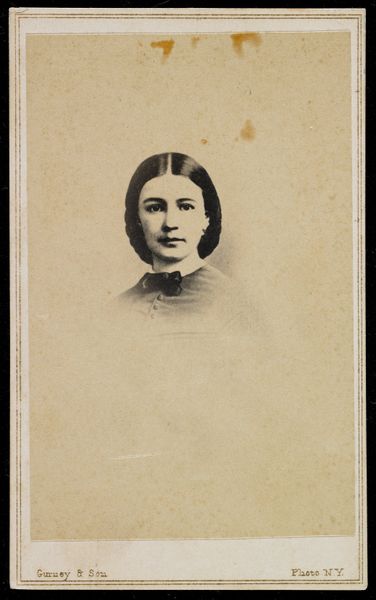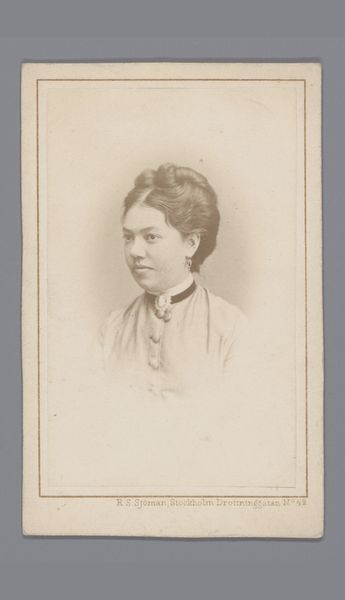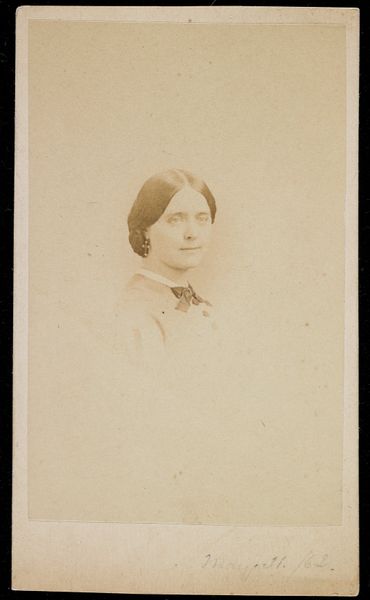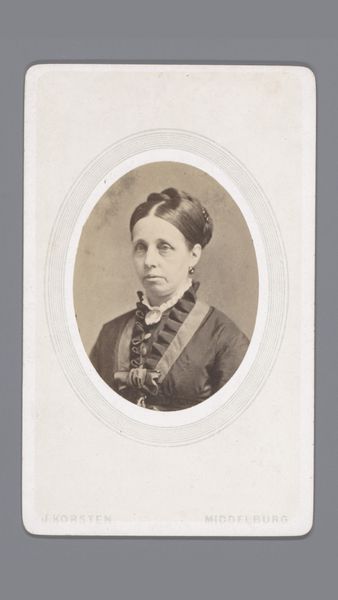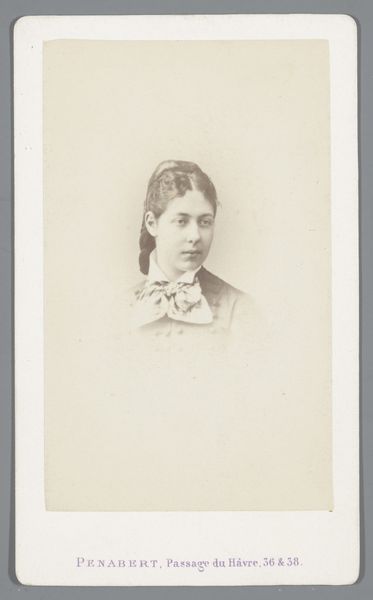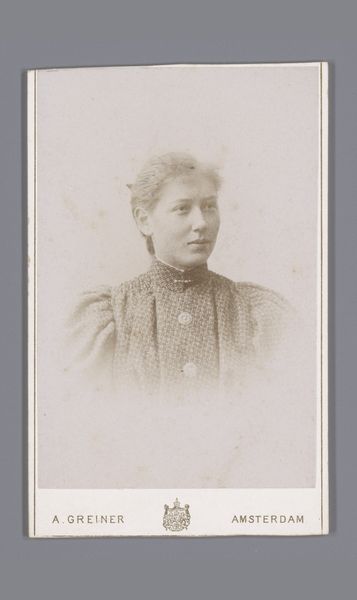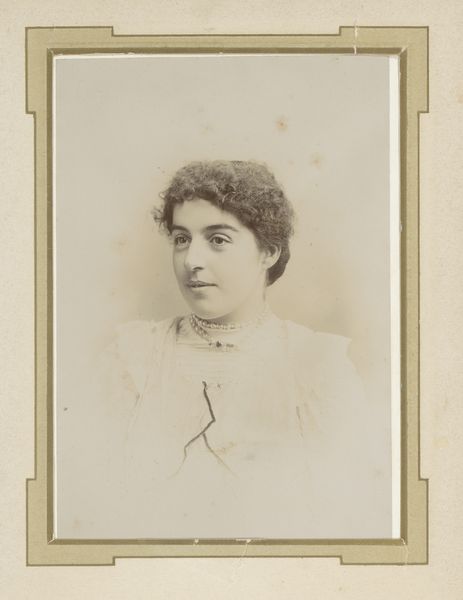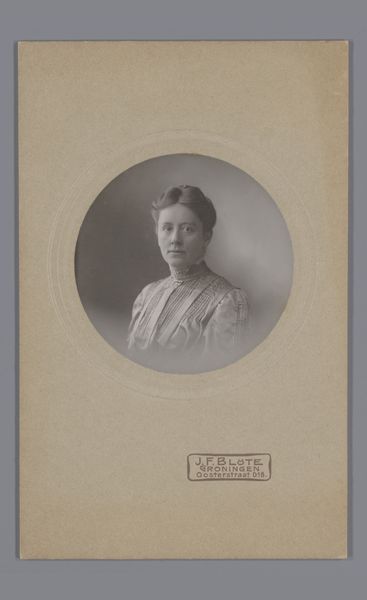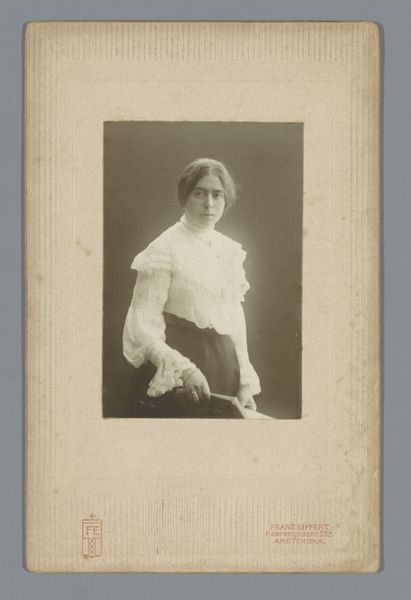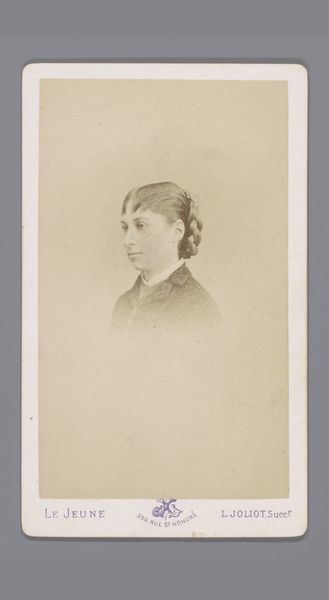![Untitled [portrait of an unidentified woman] by Jeremiah Gurney](/_next/image?url=https%3A%2F%2Fd2w8kbdekdi1gv.cloudfront.net%2FeyJidWNrZXQiOiAiYXJ0ZXJhLWltYWdlcy1idWNrZXQiLCAia2V5IjogImFydHdvcmtzL2U0MWNkZThkLTllMjMtNDMxYi1hYjIyLWZjZWUxMWIxOTIxMS9lNDFjZGU4ZC05ZTIzLTQzMWItYWIyMi1mY2VlMTFiMTkyMTFfZnVsbC5qcGciLCAiZWRpdHMiOiB7InJlc2l6ZSI6IHsid2lkdGgiOiAxOTIwLCAiaGVpZ2h0IjogMTkyMCwgImZpdCI6ICJpbnNpZGUifX19&w=3840&q=75)
Untitled [portrait of an unidentified woman] 1858 - 1869
0:00
0:00
photography, albumen-print
#
portrait
#
photography
#
portrait reference
#
framed image
#
united-states
#
portrait drawing
#
portrait art
#
albumen-print
Dimensions: 3 9/16 x 2 3/16 in. (9.05 x 5.56 cm) (image)4 x 2 7/16 in. (10.16 x 6.19 cm) (mount)
Copyright: Public Domain
Curator: Jeremiah Gurney’s “Untitled [portrait of an unidentified woman]” made between 1858 and 1869, invites us to consider early portrait photography in the United States. The albumen print, preserved beautifully by the Minneapolis Institute of Art, captures a delicate but thoughtful figure. Editor: There’s something so inherently melancholic about it. She has these enormous, slightly downcast eyes…it gives the impression of a heavy secret, a weight she carries. Curator: And what weight did these early photographic processes carry? Albumen prints were all the rage, yes, but also intensely labor-intensive. Think of the egg whites needed just for one print! Mass production meant exploiting labor, specifically, lower-class women. It gives the image another, very modern, resonance. Editor: Oh, absolutely, it's mesmerizing to think of her existing in that web of labor, contributing to a portrait, which, in itself, becomes another commodity. Do you think she's aware? There's almost a defiance there. Curator: Maybe not consciously, but who knows? It's so hard to separate the material from the emotional when art—and early photography is no exception—is concerned. Look at her expression; so unreadable. Photography in that era had such high demands, especially in studio portraiture. Consider that Gurney, already renowned, still might not have exerted total control in posing. Editor: All of this makes her resistance, either intended or otherwise, such a victory of her personhood. The sitter's expression seems subtly guarded and reserved—that is fascinating, when coupled with what it represents about that historical period. And considering that, to some extent, early photographs became standardized objects...it brings the material into such striking relief. Curator: The magic trick, perhaps, is the alchemy involved: mixing raw materials with individual moments to create something which simultaneously resonates with something both so singular and something collectively experienced. Thank you for helping to highlight her quiet strength, for pointing toward both her mystery, and her history. Editor: Absolutely—it's through recognizing that blend of materiality, skill, and subjectivity that our encounter with such artwork takes on a newer, richer light.
Comments
No comments
Be the first to comment and join the conversation on the ultimate creative platform.
